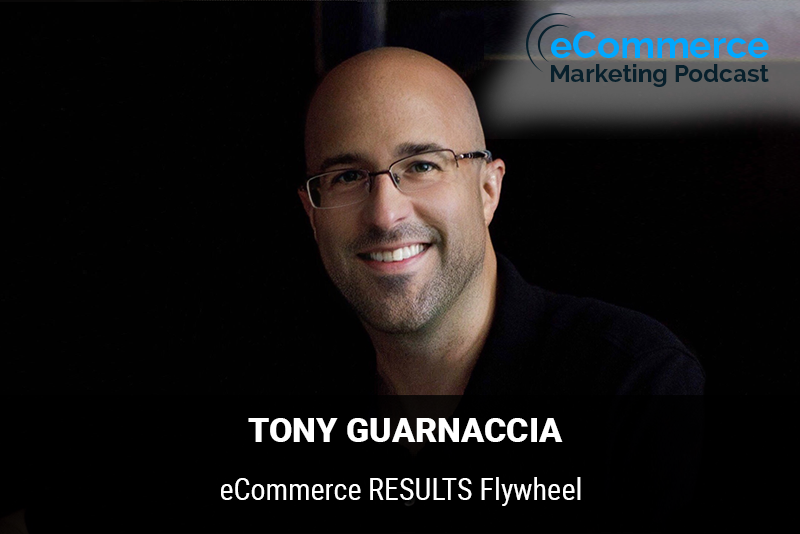
The eCommerce Marketing Podcast walks you through everything that goes into ecommerce marketing — from inbound marketing to paid advertising to conversions. Learn the strategies top marketing experts use to grow their businesses.
Marketing Strategies Revealed in this Episode:
- What exactly is a Results Flywheel and how can it be applied to ecommerce businesses?
- How does a business know what to focus on and what is right for their business?
- What specific things need to be in place in order to handle an exponential growth in profits?
- Ecommerce growth success stories and how they were achieved

Episode Title: Achieving Sales and Profit Growth with Tony Guarnaccia
Host: Arlen Robinson
Guest: Tony Guarnaccia, CEO and Founder of Big Fish Results
In this episode of the E-commerce Marketing Podcast, Arlen Robinson talks with Tony Guarnaccia, a digital marketing expert who has helped grow over 10,000 small businesses and several Fortune 500 companies. Tony shares his journey from his family’s Italian bakery to founding Big Fish Results and developing the Results Flywheel system. He explains how small businesses can achieve exponential growth in sales, profits, and customer loyalty using this system.
Key Takeaways:
- Introduction and Tony’s Background [00:00 – 04:30]
- Tony’s journey from his family’s bakery to founding Big Fish Results and working with Fortune 500 companies [02:00].
- Importance of learning from failures and leveraging those lessons to help small businesses [03:30].
- What is a Results Flywheel? [04:30 – 08:30]
- Concept of the Results Flywheel inspired by Jim Collins’ book “Good to Great” [05:00].
- The three essential components: knowing what to do, how to do it, and taking action [07:00].
- The Six Growth Factors [08:30 – 12:00]
- The six key factors: Market, Offerings, Value, New Buyers, Lifetime Value, and Loyalty [09:00].
- Importance of compounding growth factors for exponential growth [10:30].
- Focus on Loyalty and Referrals [12:00 – 15:00]
- The significance of loyalty and referral programs for small businesses [12:30].
- Example of big brands like Apple and Amazon using low-cost entry points to build long-term customer relationships [13:30].
- Planning for Exponential Growth [15:00 – 20:00]
- Importance of having systems and processes in place to handle increased business volume [16:00].
- Starting with existing customers to drive growth before expanding to new customer acquisition [18:00].
- Success Stories and Practical Examples [20:00 – 25:00]
- Case study of a home care business that focused on a profitable niche to achieve significant growth [21:00].
- Emphasizing the importance of taking small steps to achieve long-term exponential growth [23:00].
Guest Info:
- Name: Tony Guarnaccia
- Position: CEO and Founder of Big Fish Results
- Website: Results Score
- Contact: Email Tony at Tony’s Email











